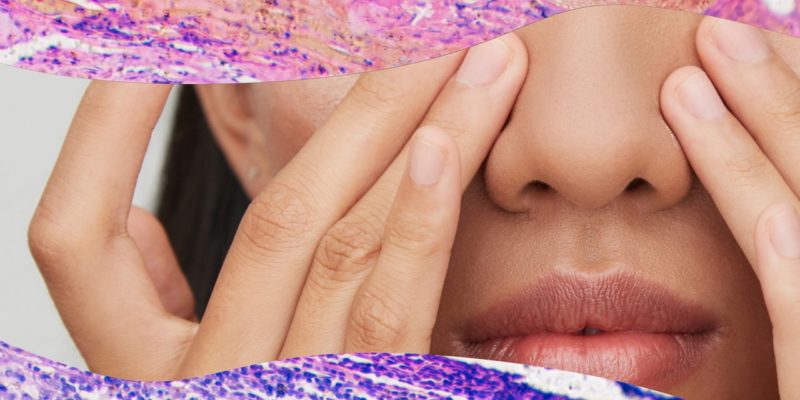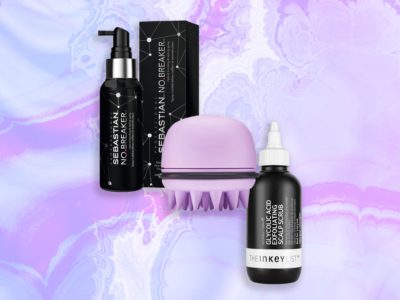
Viscusi considers sunscreen to be the “most important change [to make to your skin-care routine] going forward to reverse past sun damage and prevent future damage.” And don’t forget to put it onto your donor site, too. “[They] are often hidden areas you may forget to apply sunscreen,” Viscusi says. “It’s crucial to give the donor site extra love and sun protection.”
How to Adjust Your Skin-Care Routine
Regardless of how your skin was reconstructed, your fresh scar needs to be moisturized more than the rest of your face. “Scars tend to be a little bit drier than normal for a while afterward,” Minkis notes. No amount of heavy moisturizer will be too much for it.
For the rest of your go-to skin-care products, only layer mild ones onto your scar, Lee says. Avoid exfoliants, acids, or retinols.
Scar Management & Treatments After Mohs Surgery
Wanting your scar to disappear doesn’t make you vain — it makes you a human being, Gaveras says. In fact, the number-one thing Lee’s patients ask about after their procedures is what the best scar cream is. We’ll save you the inquiry by sharing her insight: There’s no good evidence to show that scar creams make a difference. “A lot of scars will mature by themselves and get better on their own,” Lee says. However, she adds, “if you have a raised scar, using a silicone sheet can be helpful.”
Minkis, Desai, and Viscusi recommend silicone-based products, like sheets as well as gels, to help flatten and soften the scar. Silicone gels “create a protective barrier over the scar, which increases hydration and helps halt excessive collagen build up,” Viscusi notes. Be sure to consult your doctor if you have any scar concerns, so you can figure out what scar treatment works best for you.
All that being said, in-office treatments are your best bet for decreasing the appearance and thickness of your scar. Many of them can be combined and done during the same visit, Minkis says.
Conversely, you don’t necessarily have to do anything to your scar. You can wear it proudly as a reminder that you survived, just as these people do. Most of the time, these treatments are for addressing cosmetic concerns, so they may not be covered by insurance. They can be considered medically necessary if your scar is symptomatic, aka tender or itchy, though, Lee says. In that case, the procedure may be eligible for coverage. “However, it’s important to speak with your physician to see if the scar treatment is included as part of the skin cancer surgery and management,” she adds.
Injections
For the raised, thick edges of scars, one of the first treatment options considered is steroid injections to potentially help flatten them out. Because it is only administered into the scar site, “[the steroid] has very little to no systemic absorption,” Minkis explains. “It’s very safe, just a very small quantity of it.” The same injection is typically used for keloid scars, hypertrophic scars, and inflamed skin, like cystic acne. If you’re prone to any of those conditions, you’ll most likely be a candidate for steroid injections, Desai adds. Most of the time, only one round is necessary. If it works, you won’t need to undergo any other treatments.





